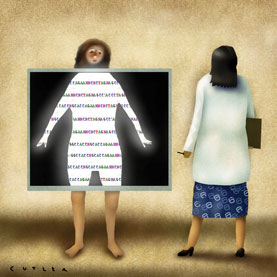Success Story: From peer review to practical application
While using the Epley Maneuver undoubtedly relieves benign paroxysmal positional vertigo, training staff in a new method presented obstacles. One physician explains how he implements dedicated teaching time for staff.
Where: University of Oxford, Dept. of Primary Health Care, Oxford, UK
The issue: How to motivate physicians to learn the Epley Maneuver, a technique used to treat benign paroxysmal positional vertigo (BPPV). The goal was to teach staff physicians how to perform the technique, so they, in turn, could instruct their patients to perform the maneuver on themselves, to relieve their dizziness.
Background
A medical practice in Oxford researched, via Pub Med, the effectiveness of the Epley Maneuver in relieving benign paroxysmal positional vertigo (BPPV). The goal was to determine whether the technique was worth teaching to staff physicians. Research confirmed the effectiveness of the maneuver. In fact, several of the trials reviewed showed a statistically significant (4.2 times greater) improvement in symptoms, using the Epley Maneuver, compared with a placebo technique. Best of all, there were no side effects.
Paul Glasziou, FRACGP, PhD, director of the university's Center for Evidence-Based Medicine, launched an effort to teach the procedure to his staff, so the physicians, in turn, could instruct their patients to perform it on themselves, eliminating the need for them to make a special clinic visit. The challenge for Dr. Glasziou was fitting training sessions into everyone's schedule and determining the most effective teaching method.
Although an appendix in the Cochrane Review provided a diagram of the technique, “We felt this wasn't enough and some coaching was needed,” said Dr. Glasziou. “Fortunately, a neurologist in our department on sabbatical agreed to oblige.”
How it works
In one in-house session, the neurologist demonstrated the Epley Maneuver to the physicians on a meeting room table. Afterward, Dr. Glasziou and several colleagues practiced performing the technique. Next, Dr. Glasziou treated a patient with the technique after first reviewing a Web video. However, a few months later, Dr. Glasziou discovered that no one else in the practice had begun using the technique on patients. When he raised this issue at the next Journal Club meeting, staff members reported feeling insecure with the maneuver and reluctant to use it on their patients.
To improve their confidence level, Dr. Glasziou distributed a handout with diagrams. He also placed an instructional video on the department's intranet so the staff could practice the procedure at their own convenience. Then, he took the time to personally train each staff member. This approach worked. Individual instruction at a specific time, rather than learning via computer, was the key to the successful training outcome.
The challenges
Physicians had to learn the maneuver in order to teach it to patients with BPPV, which required time and commitment. They also needed to feel extremely comfortable before using the new approach on patients.
Results
- Everyone in the practice knows the Epley maneuver;
- Doctors are training their patients with BPPV to use the maneuver on themselves; and
- Doctors provide patients with handouts for easy reference.
Lessons learned
It is always difficult for busy general physicians to find the time to learn something new no matter how beneficial it is to patients and the practice. The educational director must persist in assisting the staff to learn new techniques, and to initiate discussion about why physicians are having difficulty.
How patients benefit
Patients learn a quick and effective way to relieve their dizziness. They do not need to return to the clinic every time they experience an episode of BPPV. This saves personal time and clinic time and also gives them the tools they need to manage their condition.
Next steps
At each biweekly correct name session, physicians discuss the follow-up measures taken after the previous session. At the end of each year, the changes made over the past 12 months are discussed, along with an assessment of how well the measures have or have not been adopted.
Words of wisdom
“I think (evidence-based medicine) needs to involve the entire clinical team,” said Dr. Glasziou. “You need to set aside dedicated time, or you won't do it. You also need to make it fun, or you won't persist. Our Journal Club does this by focusing on our clinicians' needs (they vote for topics), by emphasizing practical issues, and by open, candid and sometimes humorous discussions. There needs to be follow-through to overcome the barriers for changing procedures in a practice, or nobody will be motivated.”




